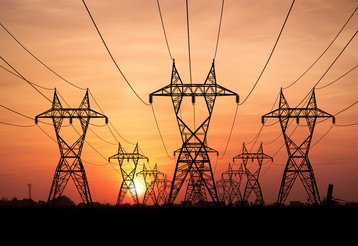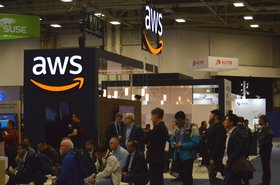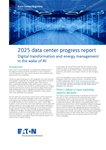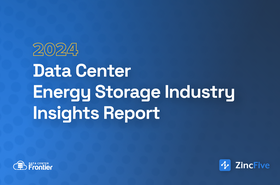US regional grid operators have requested an extension on a federal deadline to upgrade their existing transmission infrastructure to improve capacity levels.
In late 2021, the Federal Energy Regulatory Commission (FERC) directed all six major regional operators outside of Texas to establish programs to implement a system for dynamically updating transmission line capacity ratings based on real-time weather conditions.
The upgrade, scheduled to be completed by July 2025, aims to replace the current static settings. Current settings do not account for real-time temperature decreases or cooling winds that could enhance their capacity, resulting in less power being transmitted than is possible.
The deployment of dynamic line rating sensors, which are designed to measure the real-time temperature of power lines, can increase the capacity of existing lines by up to 40 percent.
However, all six grid operators have reported they cannot meet the deadline.
A review of regulatory findings reported in Reuters showed that the delays risk impacting efforts to modernize the aging power infrastructure by several years.
The delay could have significant implications for the country’s data center market, which is projected to grow by at least 65GW and as much as 90GW by 2029, according to Grid Strategies.
The operators gave varying reasons behind the delays. The Midcontinent Independent System Operator, which manages electricity markets across 15 states, cited a shortage of software vendors as a key barrier.
The California Independent System Operator (CAISO) told FERC it may require until late 2027 to comply fully. “Completing this effort by July 2025 is too ambitious for us and our transmission owners,” CAISO attorney Andrew Ulmer explained.
PJM Interconnection, which covers 13 states in the eastern and southern US, will meet with transmission owners in the near future to discuss a possible deadline extension.
The Southwest Power Pool, which covers a region from North Dakota to Louisiana, suggested it may need until December 2026.
New York’s grid operator, New York Independent System Operator, has already extended its deadline to late 2028.
Finally, ISO New England, which operates New England's grid, said it plans to request a deadline extension in Q4 2025 without specifying how long it will require.
The delays put further pressure on the US grid, which President Donald Trump described as “increasingly unreliable” when he declared a “national energy emergency.”
The delays could significantly affect data centers, especially large-scale ones, from acquiring a near-term grid connection to power their operations. Data centers already face long connection times – up to seven years in Virginia -. With persistent delays in grid infrastructure improvements, there is a risk that the wait for a connection will be prolonged.
As a result, increasing numbers of data centers are looking for behind-the-meter power that expedites their route to market. Amazon Web Services and Microsoft have secured behind-the-meter agreements from large-scale nuclear power plants.
In addition, several data centers have announced plans to build on-site natural gas turbines as a primary power source, including the much-vaunted Stargate data center in Texas, which signed on to build a 360.5MW colocated natural gas-fired power plant.
Read the orginal article: https://www.datacenterdynamics.com/en/news/us-data-centers-face-grid-bottlenecks-as-regional-operators-delay-upgrades/









